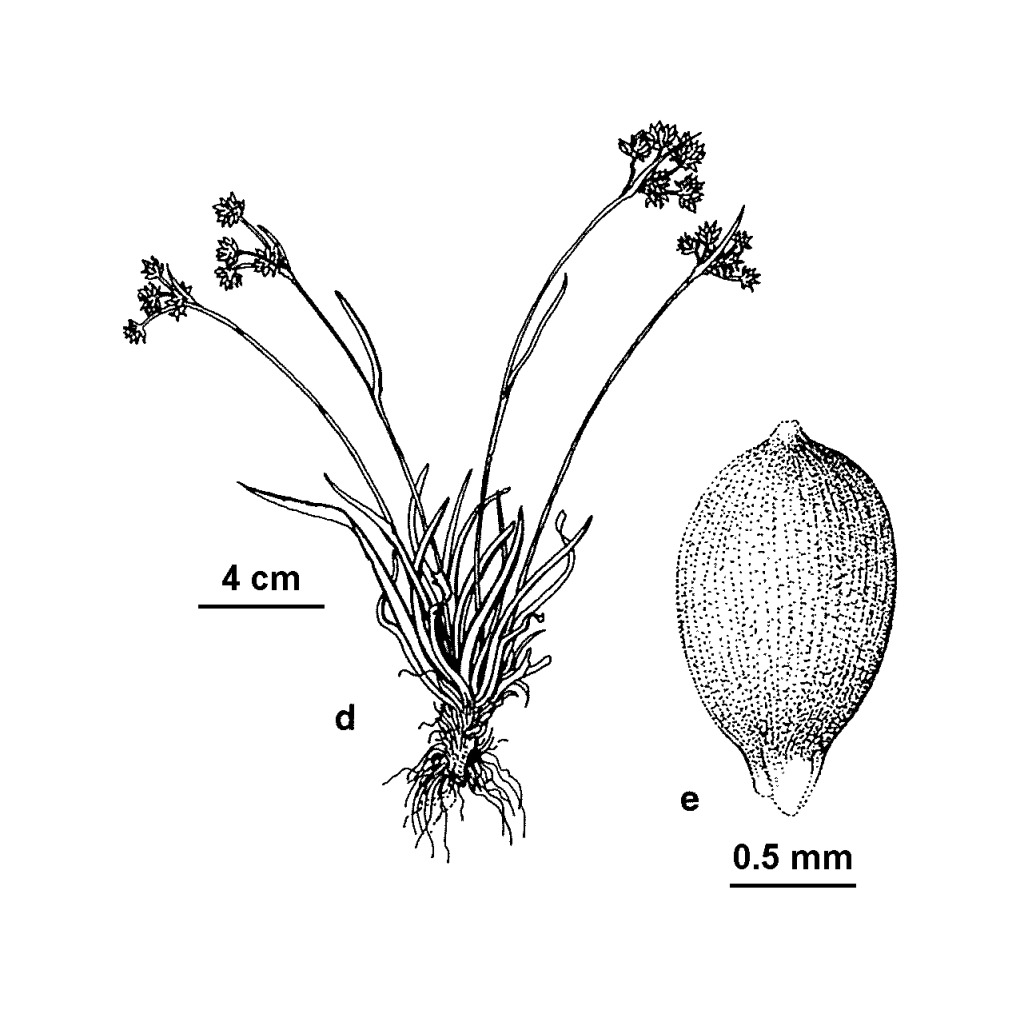Luzula novae-cambriae
Gand.Tufted perennial, flowering stems to c. 30 cm high but usually c. 15 cm and only shortly exceeding leaves, often reddish; fibrous leaf remnants often retained as a thick layer at base. Leaves channelled to closely folded, rarely flat, 1.5–4 mm wide when opened out, somewhat rigid, sparsely ciliate along thickened margins except near base where densely ciliate, obtuse and thickened, or occasionally acute at apex. Inflorescence umbellate, usually with c. 6 clusters, each c. 6 mm diam., with stalks often drooping or strongly recurved in fruit; tepals acuminate, mostly 3–3.5 mm, rarely only c. 2.5 mm long, shining dark brown to black with narrow pale membranous margins, contrasting with the very broad, pale, subtending bracts; anthers c. 1 mm long; capsules subequal to tepals, dark brown to blackish at maturity; seeds c. 1.4 mm long excluding caruncle which is c. one-fifth as long as seed. Flowers Nov.–Feb.
NIS, EGU, HSF, HNF, MonT, VAlp. Also NSW, Tas. Occurs mostly in rather exposed, rocky sites in higher alps (e.g. Mts Hotham, Buller, Howitt, Buffalo, Cobberas and Bogong High Plains), but apparently absent from the Baw Baws.
Apparent hybrid plants, intermediate in form between L. novae-cambriae and L. modesta are common in areas where both species occur. These plants are tufted or shortly rhizomatous, have inflorescences with very shortly stalked or subsessile flower clusters, and tepals and capsules which are usually paler than those of typical L. novae-cambriae. They typically occur in alpine grassland or heathland, often adjacent to the preferred habitat of either putative parent species. See also notes under L. meridionalis var. flaccida.
Walsh, N.G. (1994). Luzula. In: Walsh, N.G.; Entwisle, T.J., Flora of Victoria Vol. 2, Ferns and Allied Plants, Conifers and Monocotyledons, pp. 233–238. Inkata Press, Melbourne.
 Spinning
Spinning
